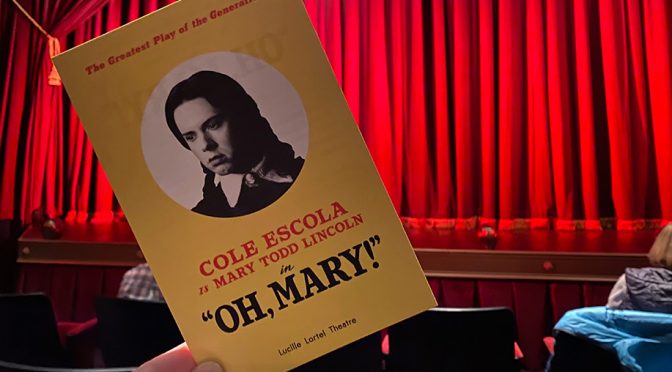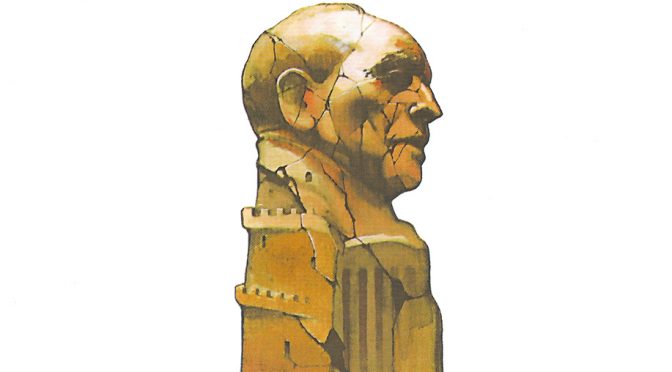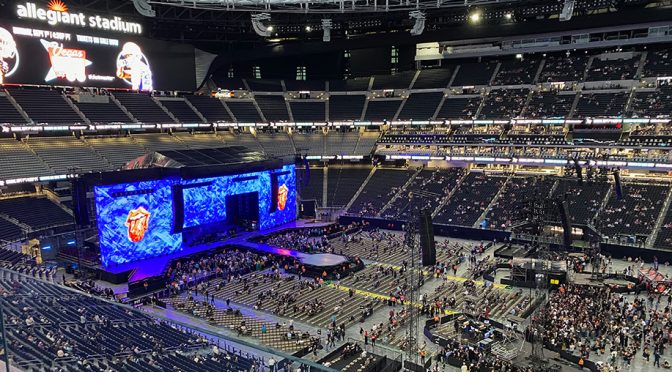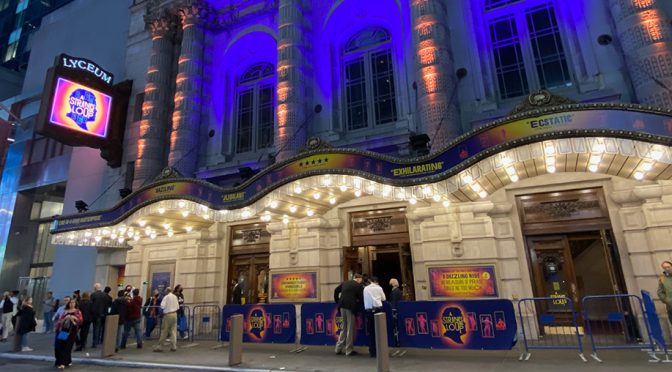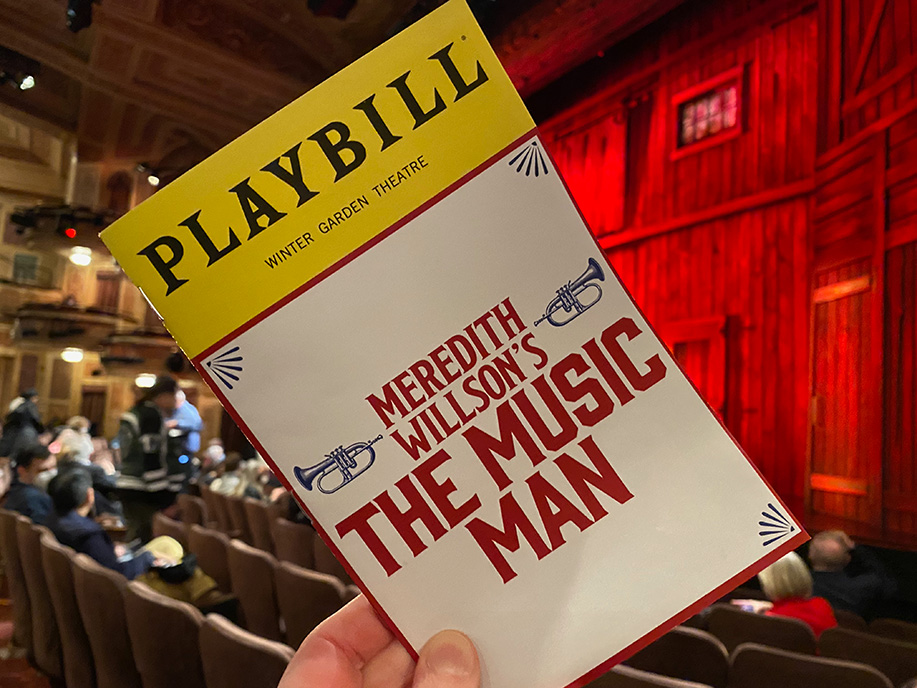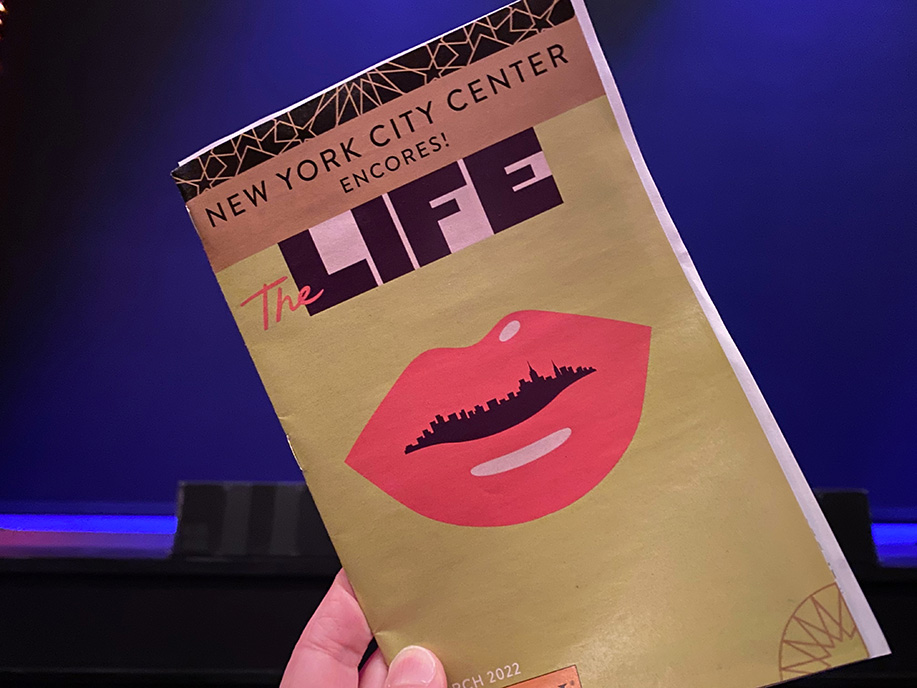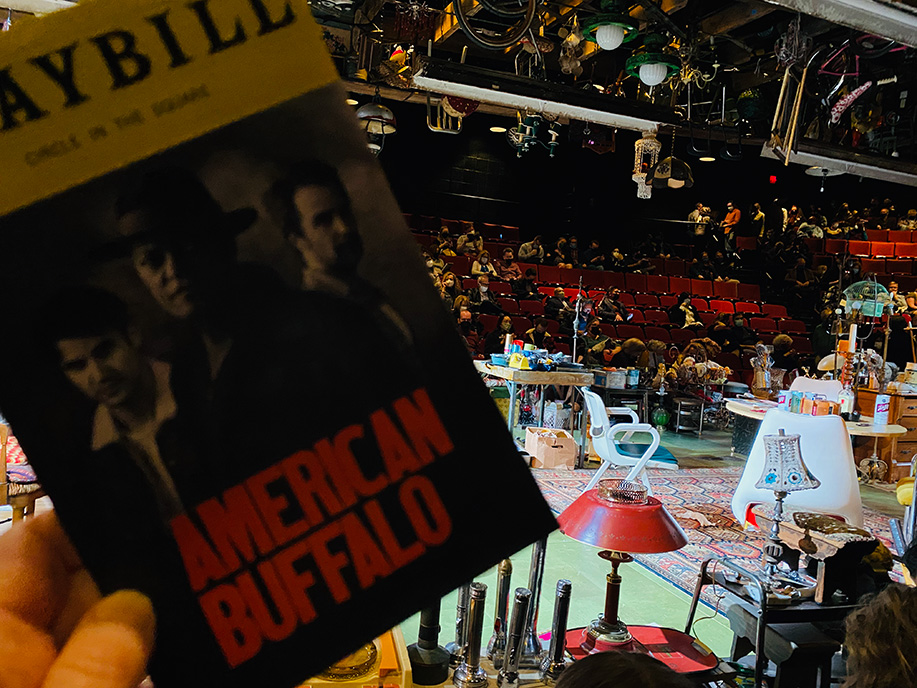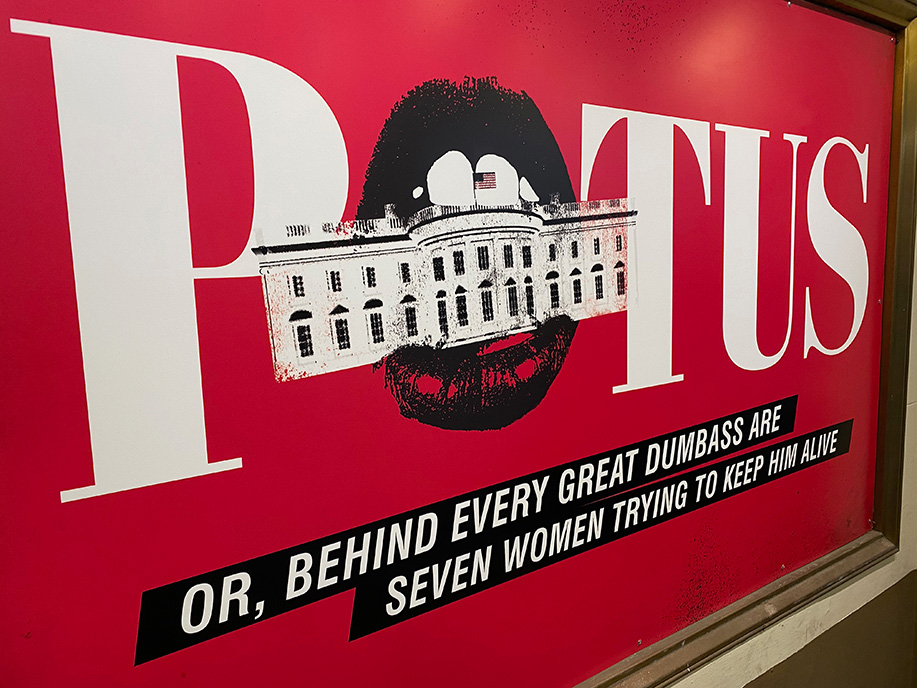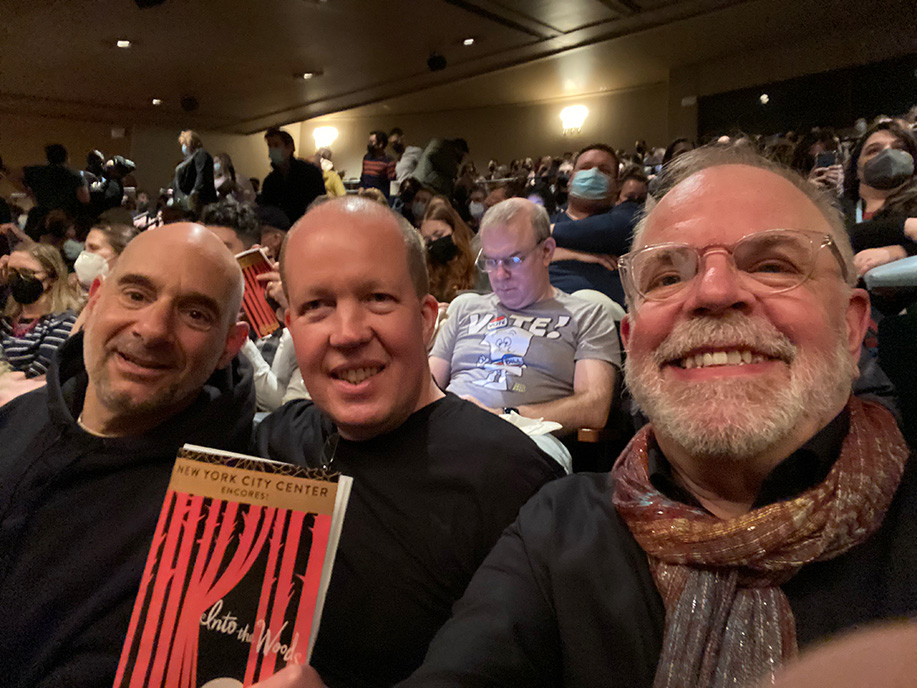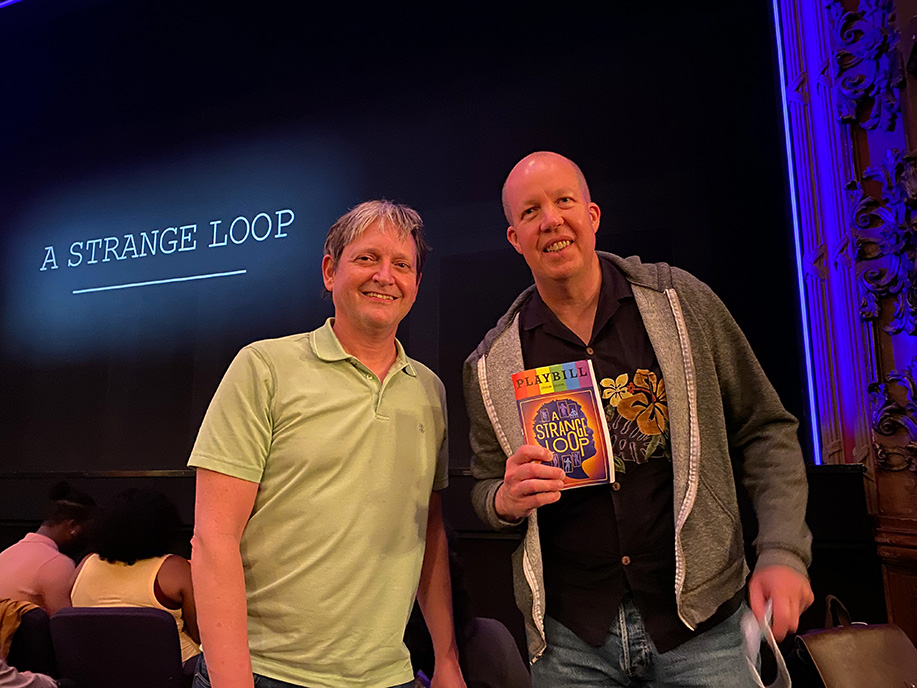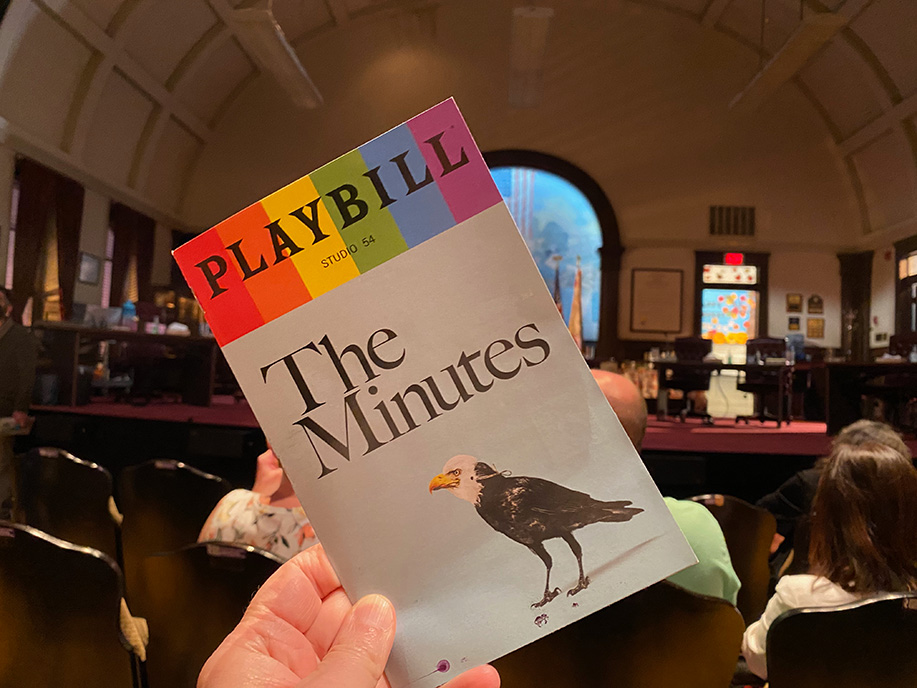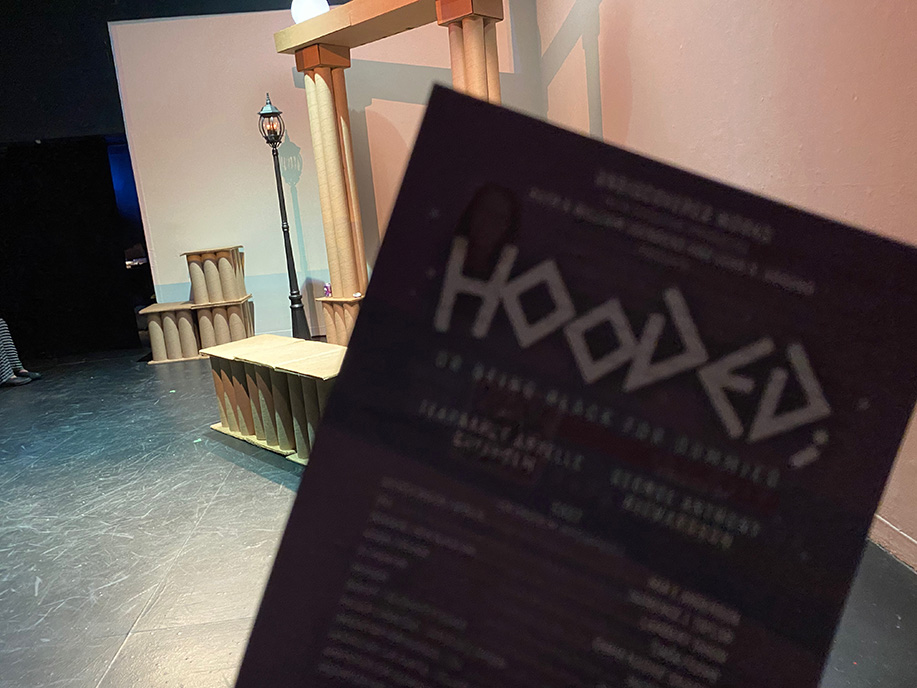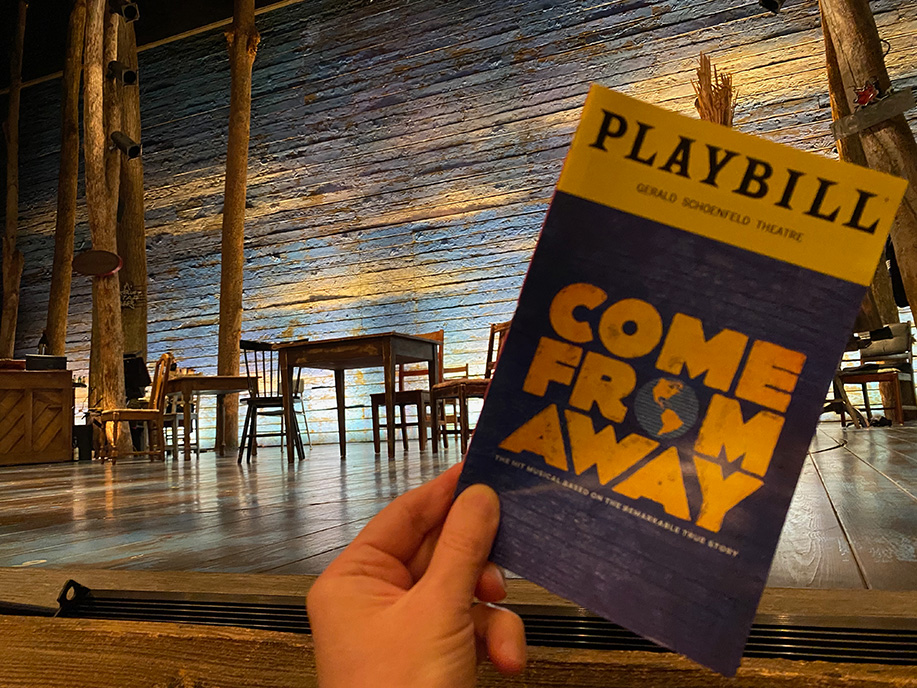Lots more shows for the first half of 2024! These include Broadway, Off-Broadway, and Off-Off-Broadway. Out of them all, “Oh Mary!” was my favorite by far. I saw the production in the West Village before it moved to Broadway. The only thing that would have made seeing “Oh Mary!” better would have been going it with someone! But attending alone was better than not seeing it at all. For “Hamilton,” it was my FOURTH TIME going after winning the lottery to see it for 10 bucks each time!
Category Archives: Uncategorized
Robert Moses: The Power Broker
The recent demise of congestion pricing in Manhattan got me thinking that cars always win. If you’ve ever wondered why New York City lacks a mass transit system befitting the world-class metropolis it is meant to be, why tolls are still being charged to cross bridges many generations after construction has been paid for and that those tolls keep going up, or why getting to JFK airport on a weekday afternoon is such a hellish nightmare, look no further than Robert Moses, the master builder who controlled most of our public infrastructure for many long decades. With the possible exception of J. Edgar Hoover at the FBI, no one individual has ever held such unbridled autocratic authority over so many people and so many resources for so long.
 Undisputably, Robert Moses was THE dominant figure in New York City from the mid-1920s to the late 1960s. He met the Queen of England and the Pope. Mayors, Governors, and Presidents came and went, but Robert Moses remained. Several Mayors and even FDR himself tried to oust Moses but failed. At various points in his long career, Moses was Chairman of the New York State, Long Island, and New York City parks departments; Chairman of the Emergency Public Works Commission; Chairman of the New York State Power Authority; chief of the New York City Planning Commission; President of the 1964-65 New York World’s Fair; and Chairman of the Triborough Bridge and Tunnel Authority. Despite holding all these quasi-government posts, he was never elected to any office. In 1934 he ran for Governor of New York State as a Republican and lost in a landslide.
Undisputably, Robert Moses was THE dominant figure in New York City from the mid-1920s to the late 1960s. He met the Queen of England and the Pope. Mayors, Governors, and Presidents came and went, but Robert Moses remained. Several Mayors and even FDR himself tried to oust Moses but failed. At various points in his long career, Moses was Chairman of the New York State, Long Island, and New York City parks departments; Chairman of the Emergency Public Works Commission; Chairman of the New York State Power Authority; chief of the New York City Planning Commission; President of the 1964-65 New York World’s Fair; and Chairman of the Triborough Bridge and Tunnel Authority. Despite holding all these quasi-government posts, he was never elected to any office. In 1934 he ran for Governor of New York State as a Republican and lost in a landslide.
His list of accomplishments is long. He built Jones Beach State Park, Jacob Riis Park, Orchard Beach, numerous power dams, many low-income housing projects, countless state parks, countless city parks, and the Central Park Zoo. He was instrumental in the construction of Shea Stadium, the United Nations headquarters, and Lincoln Center. He built the Henry Hudson, Grand Central, Northern State, Southern State, Taconic, and Meadowbrook State parkways, among others. He built the Triborough, Verrazano-Narrows, Whitestone, and Throgs Neck bridges, and many more. He also built the Brooklyn-Queens Expressway (the BQE), the Staten Island Expressway, and others. In short, much of New York City and New York State, and especially the way we get from Point A to Point B, is because of Robert Moses.
But in addition to being a builder, Moses was also a destroyer. He razed many neighborhoods and displaced countless numbers of their residents. The Cross Bronx Expressway was — and still is, to this very day — especially cruel. So was the construction of the Gowanus Expressway, which tore through the Sunset Park neighborhood in Brooklyn, destroying a community. According to the book, Moses refused the pleas of local residents to build the highway over Second Avenue rather than Third, to the demise of these families. Surprisingly, Moses didn’t always get his way. Instead of a Brooklyn-Battery Tunnel, he wanted a bridge, which would have obliterated large chunks of Lower Manhattan. He also intended to build a Mid-Manhattan Expressway across 30th Street, and he wanted to run a highway through Manhattan’s West Village and Washington Square Park. Imagine New York City today if Moses had succeeded in those projects? And through his stubborn intransigence, Moses also had a hand in the loss of the city’s beloved Brooklyn Dodgers baseball team!
All of this and much more is described in The Power Broker: Robert Moses and the Fall of New York, the massive biography by Robert Caro. This book, which is thick and heavy enough to be used as a doorstopper, was published in the early 1970s, when Moses was still alive. It has long been considered the definitive biography of Moses. It won a Pulitzer Prize. But I think it is a flawed work. In my view, such a lengthy account (this one clocks in at 1,200 pages, which took me almost three months to finish!) should cover everything about its subject. However, there was nothing in The Power Broker about Jane Jacobs and her epic battle with Moses over the expressway he wanted to build through the West Village. And there was not enough about the public housing built by Robert Moses. Nevertheless, despite its flaws, I do consider The Power Broker to be a must-read for anyone interested in 20th Century American politics and, more specifically, infrastructure.
My favorite sections of the book included everything that had to do with Al Smith, the Roman Catholic governor of New York State who ran unsuccessfully for President in 1928 (losing to Herbert Hoover). According to the book, Smith was the only governor, the only politician really, whom Moses ever looked up to and the only one he showed respect to. I also learned a lot in this book about Fiorello LaGuardia, the larger-than-life Mayor of New York in the 1930s and 40s, who had grand visions of his own. I also learned a great deal in this book about the flawed reporting published by the New York Times and many other newspapers about Moses, who in addition to being a master builder was also a master of spinning a narrative.
Here are a few more notes about Robert Moses, according to the book:
- He was physically imposing, big, tall, and muscular.
- He attended Yale and was on the swimming team.
- As an adult he went swimming out in the ocean, so far out that he could not be seen from shore.
- He did not drive himself but rather was chauffeured around in the back of a town car.
- He went deaf! (This was fitting because he never listened to anyone anyway.)
- He had a wife, Mary, and two daughters. A month after Mary died of old age he got remarried to a younger woman, also named Mary and her nickname was Mary II.
According to the book, it was New York Governor Nelson Rockefeller who finally ousted Moses from power. The man who had once wielded so much control finally died in 1981, broken, lonely and penniless.
If you ask any New Yorker today what they think about Robert Moses, the reaction will almost invariably be negative. In my view that is because of his biggest flaw, which was his failure to envision a world that did not revolve around people getting from one place to another in single-passenger cars.
Rolling Stones at MetLife Stadium on May 23, 2024
If anyone could have predicted back in 1989, the first time I saw the Rolling Stones live, in East Troy, Wisconsin, that in the year 2024 the Stones would STILL BE HERE, and touring with a brand-new album under their belts to boot, I would never have believed them. When I saw the Steel Wheels show back in ’89, I was certain that this was my one and only chance I would get to see the Stones, ever. The fact that this band is still here, still playing, is an unimaginable feat. They have been performing live since before I was even born, and I am no spring chicken myself. We are so blessed to still have the Stones after all these years.
The Thursday, May 23, 2024, show at MetLife Stadium was one of the best, if not THE best of all the Stones shows I have yet seen. Not only were the lads in fine form musically, putting on a fantastic performance, it also turned out to be a wonderful overall EXPERIENCE. This was my 20th time.
My most recent show had been May 11 in Vegas, which was also fantastic, but in my view the Stones were even better tonight. Mick had more swagger and was more enthusiastic and had more flamboyant gestures. During Miss You he gave us some extra what’s-a-matter-wich-you-boy’s, in addition to his howlig and harmonica playing. Keith was in top form as well. His guitar playing was splendid, especially on You Got the Silver, Gimme Shelter, Sympathy, and Jumping Jack Flash. Best of all, you can see they are really enjoying themselves up there! Those 60-foot screens don’t lie.
Gene’s favorite numbers included Get Off My Cloud, Angry, and Jumping Jack Flash. My favorite this night was Miss You. Gene and I were both impressed by Chanel Haynes on Gimme Shelter. Gene remarked that he was especially moved by Steve Jordan’s drumming and Keith’s overall joyousness.
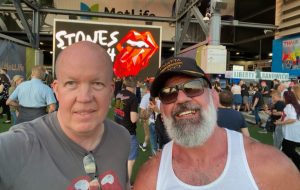 This was my first time seeing the Stones with Lucky Dip tickets. I had originally intended to attend this show with my friend Bill and go with him to meet Shidoobeans for the first time, but sadly Bill threw his back out that morning and had to reluctantly cancel. Our mutual friend Gene saved the day, driving us from Brooklyn. I am so very glad to have had the chance to go with Gene, who is also a lifelong Stones fan and — an eternal optimist — who has seen them many times over the years. Not only that, but Gene met both Mick and Keith and many others associated with the band over the years, and he has many war stories to share. For tonight, Gene timed everything perfectly, as we got there just before 8 pm as the opening act, Jon Batiste, was just taking the stage. Our LD seats were on the side of the stage in the lower bowl, section 142 to be exact. Although these seats were labeled “limited view” on our paper tickets, we were both thrilled with our proximity. While we did not have a great view of Steve Jordan, we were close to the runway on Ronnie’s side of the stage and the large screens helped immensely. From this angle we could see not only the band, but the large and enthusiastic crowd. What a festive night this was. The crowd was in such good spirits.
This was my first time seeing the Stones with Lucky Dip tickets. I had originally intended to attend this show with my friend Bill and go with him to meet Shidoobeans for the first time, but sadly Bill threw his back out that morning and had to reluctantly cancel. Our mutual friend Gene saved the day, driving us from Brooklyn. I am so very glad to have had the chance to go with Gene, who is also a lifelong Stones fan and — an eternal optimist — who has seen them many times over the years. Not only that, but Gene met both Mick and Keith and many others associated with the band over the years, and he has many war stories to share. For tonight, Gene timed everything perfectly, as we got there just before 8 pm as the opening act, Jon Batiste, was just taking the stage. Our LD seats were on the side of the stage in the lower bowl, section 142 to be exact. Although these seats were labeled “limited view” on our paper tickets, we were both thrilled with our proximity. While we did not have a great view of Steve Jordan, we were close to the runway on Ronnie’s side of the stage and the large screens helped immensely. From this angle we could see not only the band, but the large and enthusiastic crowd. What a festive night this was. The crowd was in such good spirits.
The vote song was Wild Horses. I had voted for Depending On You in honor of my dear friend Steve Couse, of blessed memory. The other choices this night were Worried About You and Fool to Cry.
Jon Batiste was the opening act, and his performance was fantastic. He had a full entourage with him, but he also performed several numbers by himself on piano. He wore a sparkly gold suit and a beaming smile. One of his songs was When the Saints Go Marching In!
After Jon Batiste finished Gene and I had time for a pit stop, a visit to the refreshment stand, AND a stop by the merch stand for t-shirts, where there was absolutely no line, and we were back to our seats in plenty of time. Thanks to Gene’s strategic parking decision and driving, we were on the highway back to Brooklyn in no time. Up until today the weather forcast had called for rain, but Gene insisted that we would definitely not get any rain — and he was right. On the drive home, the full moon was shining on us.
Rolling Stones in Las Vegas on May 11, 2024
A lot of the fun of traveling to a Rolling Stones show from out of town is running into fellow concertgoers who are also from out of town. My friend Craig and I both flew to Las Vegas from the East Coast on Friday night — me from New York City, and him from Washington, D.C. — for the show on Saturday, May 11, 2024, at Allegiant Stadium. We spent the day Saturday checking out the strip. We stayed at Mandalay Bay, and we walked from there to Luxor, Excalibiur, New York, New York, MGM Grand, Paris, and Caesars Palace. All along the way when we weren’t playing the slots we saw many, and I mean a great very many, people wearing Stones tee shirts. Most of the wearers were Baby Boomer age. But some had children or even grandchildren in tow. We usually nodded to one another or said hi and sometimes we chatted each other up about where we’re from. People were in Vegas from all over the country and even from overseas. In an elevator we ran into a couple from Australia who were going to Seattle next to catch the show there.
Craig and I went for an early dinner but found that most of the places already had long waits! (Note to anyone traveling from out of town for a show: If you plan to have dinner beforehand anywhere near the venue, be sure to go plenty early, because every restaurant in the vicinity is sure to be packed!) We kept looking and found a pizza place, where we were among many fellow diners also in town to see the Stones. Two in particular caught my eye. It was a man with a younger man who looked like his son. Both were wearing Stones tees and big smiles. They were absolutely glowing. They were talking to each other the whole time, not on their phones, and they were clearly enjoying each other’s company and experiencing this event together.
Getting to and from Allegiant Stadium for the concert was a breeze. We simply walked across the bridge, which the local cops had closed to vehicular traffic, from Mandalay Bay. There were lots of people coming in, but the lines moved quickly, and things went efficiently. I guess Vegas is accustomed to large events like this. This is the same stadium where the most recent Super Bowl was played! On the way over the bridge, the late afternoon desert sun was blazing. Several water stations were set up along the way. Once we were on site, the biggest crowds were the lines for merch. I would have bought a tee to add to my collection, but the lines were too long!
It was my 18th Stones show and Craig’s first. In the song vote, I chose All Down the Line and Craig wanted — and got —You Got Me Rocking. (The other two songs up for vote this night were Sad Sad Sad and Live With Me.) Craig also wanted — and got — Sympathy for the Devil and Honky Tonk Women, and he also wanted — but did not get — something from the Steel Wheels album. He predicted, correctly, that Start Me Up would be the first song.
Our seats were in the 300 level, Row A. I chose those seats because I wanted to be in the front row of a section. I could have easily stood and danced and moved and grooved through the entire show, but it’s scary up so high! Both Craig and I were a little bit afraid of the heights, and we chose to stay in our seats for most of the show, not only out of fear of falling but also because we did not want to block the view of anyone behind us who might also be sitting.
We chatted up the folks on each side of us, of course. The gentleman to my left said he had been to see many Stones concerts over the years starting in 1972. He said he still remembers when the song Satisfaction came out when he was 16! To Craig’s right was a couple from Vegas. Her name was Angie! It was her first Stones show, and she definitely wanted them to perform “my song” but sadly it was not in the cards this evening.
The Las Vegas show did offer a few surprises. Two songs, Let’s Spend the Night Together and Like a Rolling Stone, made their 2024 tour debuts. The next surprise was Keith doing TWO songs at this show after only performing one on the first three shows of this tour. He started with You Got the Silver followed by Little T&A, also known as She’s My Little Rock ’n’ Roll. Keith was in fine form. Craig remarked to me after the show that he looks so happy playing music.
They did Angry and Mess It Up from the new album, the latter of which sounded a bit messy but that’s totally OK with me. I wish they would add Bite My Head Off from the new album to the set. I was sure that would be the new You Got Me Rocking, and I am flabbergasted that they are not performing that yet! The only song that did not sound all that great, in my view, was Get Off My Cloud. But Miss You and Paint It Black were both flawless. And Jumping Jack Flash never sounded better.
Mick’s stage banter included asking where everybody was from, and he also said that he and Keith came to Vegas for the first time in 1964, not to perform but to gamble. He said they stayed at the Flamingo and that he lost lots of money but tonight he was going to try to win it back.
Mick played harmonica on Miss You and on Like a Rolling Stone and, and he played guitar on several other songs including You Can’t Always Get What You Want.
For me one of the highlights of the show was Gimme Shelter, with Chanel Haynes. Chanel was fantastic, offering not only astounding vocals but facial expressions and physical gestures that were so very powerful. She put her whole body, voice, and soul into the song. Chanel returned for Sweet Sounds of Heaven, the first of two encore songs. I think Jagger added a new lyric, something along the lines of “Let the old feel like they are young” and hearing this addition to the song moved me greatly. Yes, the Stones are older than the rocks in the Grand Canyon, but they are indeed young. In my view, this tour is a triumph, especially because they are promoting a new album, Hackney Diamonds, and a solid effort at that. Even more impressive, is that they recorded most of it this very year. I can’t wait for the follow up to Hackney Diamonds. Meanwhile, as long as the Stones are still touring, I will be there and wearing a lips and tongue tee to boot. I’m going to FOUR more shows this tour alone!
The Vegas setlist:
- Start Me Up
- Get Off My Cloud
- Let’s Spend the Night Together
- Angry
- Like A Rolling Stone
- You Got Me Rocking (vote song)
- Mess It Up
- Tumbling Dice
- You Can’t Always Get What You Want
- You Got the Silver (Keith on vocal)
- Little T&A (Keith on vocal)
- Sympathy for the Devil
- Honky Tonk Women
- Miss You
- Gimme Shelter
- Paint It, Black
- Jumping Jack Flash
- Sweet Sounds of Heaven (encore)
- Satisfaction (encore)
The opening band was The Pretty Reckless, featuring a female singer. I thought the band was fantastic, and she was charming. It must be difficult to open for the Stones, especially if you are a band that most audience members are not familiar with. I thought they did a nice, respectable set. I *always* attend the opening set. After all, if the Stones have invited a band to play on the bill with them, I am going to give that band some respect.
Before the show started, I told Craig that I was not going to take my phone out too much because there would be lots of pictures and videos posted to social media, as there always are, and sure enough, there were indeed. There was one post in particular that really made my day! Remember the father-son duo from the pizza place? They posted selfies from the show and, get this, it turns out they had Lucky Dip tickets and got Pit!
What a night, what a show.
See you at MetLife!
The Hemingses of Monticello
This is a difficult story to comprehend, but research by Annette Gordon-Reed and many others in recent decades has it well documented. Thomas Jefferson fathered SEVEN children with Sally Hemings. Three of the seven died in infancy, but the others lived to adulthood and some of them had descendants of their own, many of whom are alive today. Sally Hemings was one of hundreds of human beings enslaved in Virginia by the author of the Declaration of Independence. Sally Hemings was the half-sister of Thomas Jefferson’s widow, Martha (Wayles) Jefferson, and she was therefore the aunt of Jefferson’s two white daughters and was roughly their same age. The four of them plus Sally’s enslaved brother James Hemings lived together for several years in Paris after the Revolutionary War, while Jefferson was serving as an ambassador. When Jefferson was recalled to New York City to serve as Secretary of State in President Washington’s cabinet, they traveled back together by ship, while Sally Hemings was pregnant.
Thomas Jefferson had married Martha Wayles, who was a young widow, in 1772. Upon their wedding Jefferson received a dowry that included a plantation and many slaves, including a whole family of Hemingses, including the matriarch, Elizabeth Hemings (Sally’s mother), who had 12 children of her own, including 10 fathered by John Wayles (Thomas Jefferson’s wife’s father)! All of this is quite difficult to keep track of, and thankfully the author of “The Hemingses of Monticello” has included a family tree.
Martha died in 1782, three years before Jefferson went to Paris. This book covers not only Jefferson’s years in Paris, but also his time in New York, Philadelphia, Washington, D.C., and ultimately his retirement to Monticello. When Jefferson died on the fourth of July in 1826, he was deeply in debt, and most of the enslaved were auctioned off right on the front lawn of Jefferson’s mansion.
As I mentioned, it’s hard to get my mind around all of this. I imagine it might even have been difficult for people in the early 19th century to fathom, as well. It’s not surprising that for the better part of 200 years, few people believed the story of Thomas Jefferson and Sally Hemings. But this author, Annette Gordon-Reed, has the receipts. This is a well-researched book, full of modern-day insights. This is not a “let’s beat up on Thomas Jefferson because he owned slaves” book. Nor is it a “this is all OK because that’s just the way it was back then” book. The author puts the events she describes into context of the times, while at the same time offering a more up-to-date perspective. She explains a great deal, and at other times she offers plausible explanations for questions that may never be answered.
Thomas Jefferson is the author of our country’s founding document and its key phrase, that all men are created equal. Yet he was an active participant in an entrenched system based on white supremacy, exploitation, and unpaid forced labor. Four score and seven years later, our nation’s sixteenth President would invoke Jefferson’s words in an effort to bring our country back together during a war that was fought, yes, to end slavery once and for all. Our nation’s history is a complicated one. Those who founded our country were indeed heroes, but all heroes are flawed.
I’m so very glad to have had the opportunity to read this book. I learned so much, and I want to learn more. This is not just the story of Jefferson and Sally Hemings, rather it is the story of the entire Hemings family, spanning many generations.
This is an important book.
Respectable: A review of Hackney Diamonds
It’s been one month since the lads released their 26th US album, Hackney Diamonds. I have not stopped playing it since. It’s that good. And I am not just saying this because I am an obsessed fan. I am an obsessed fan. But I’m no schoolboy. I know what I like. My favorite flavor is cherry red, and you better believe I can do the hip shake baby.
Like most Stones albums, this one encompasses various musical styles and genres and demonstrates that, no matter how OLD they are, they still know what they’re doing.
According to the interviews the Stones have been giving as publicity to coincide with the release, they recorded the bulk of Hackney Diamonds over the course of only a few months. This is not a collection of discarded outtakes that have been recycled for the sake of putting something out, as evidenced by their new drummer, Steve Jordan, who is on most of the tracks. Charlie Watts, who died in 2021, is on two of the songs, and the album is dedicated to him. The whole album does indeed sound fresh, like it was recorded without too much fuss. It’s not over-produced. It is however, very Stonesy. And I like it, like it, yes I do!
My thoughts and notes:
- The songs with the most Jagger swagger are Live By the Sword and Whole Wide World.
- The songs with the grooviest Keith Richards riffs are Angry and Get Close. The latter features a wonderful bit of saxophone.
- The hardest rocker is Bite My Head Off, a punk song. Paul McCartney appears on this one, and about halfway through, if you listen VERY closely, you can hear Mick call on the beloved Beatle: “Alright Paul, let’s hear some bass.”
- According to the liner notes, Bill Wyman and Charlie Watts appear on Live By the Sword. Elton John is also on Live By the Sword, as well as Get Close.
- The album is produced by a 33-year-old whippersnapper named Andrew Watt, whose parents I’m guessing had not even met yet when Tattoo You came out! Whatever Andrew Watt did, I give him much praise. He shares songwriting credit with the Glimmer Twins on three of the songs, and he plays bass on a few as well. Daryl Jones is not on the album at all.
- The dramatic crescendo of the album is Sweet Sounds of Heaven, a gospel song featuring Lady Gaga on vocals. Stevie Wonder is on piano, and if you listen very closely after the pause toward the end, you can hear Mick whisper softly, “Play me something, Stevie.”
- The final track on the album is a cover of the Muddy Waters song Rolling Stone Blues, which is the blues song from which the band derived its name. This sounds like it is just Keith on acoustic guitar and Mick on vocal and harmonica. They do it so very well, because the Delta blues is embedded in their souls.
My personal favorite is Depending On You, one of two country songs on the album. This song moves me more than any of the others, because it makes me think of my dear friend Steven S. Couse, who died in 2021, not long after Charlie. Steve, who was even more in tune with the Stones than I ever could hope to be, would have been very into this album. I do wish that he were here now to listen with me. I miss you, Steve!
You can call Hackley Diamonds a comeback album if you will. Most recently the Stones released Blue and Lonesome, a collection of blues covers, in 2016. Before that their most recent album of newly written material was A Bigger Bang, which was also a very strong album, back in 2005.
But in my view, this is the most important album the Stones have released in a long time. You think the party is over but it’s only just, only just begun! Yes, these songs are strong enough for the band tour on. Angry will fit nicely in the set list between Honky Tonk Women and Start Me Up. Whole Wide World, Bite My Head Off, Live By the Sword, and Mess it Up all absolutely, 100 percent need to be played live. And Sweet Sounds of Heaven will be fantastic as the show’s closer. Speaking of which, if you haven’t yet seen the 7-minute rendition of Sweet Sounds of Heaven with Lady Gaga, recorded live before 700 lucky attendees on Oct. 19 at their surprise album launch gig at Racket in NYC, it is highly recommended. You can find it on YouTube without too much trouble.
Nixon
The make-or-break moment for Richard Nixon came during the presidential election of 1952. He was a hotshot rookie Senator from California, and General Dwight D. Eisenhower had chosen him as his vice-presidential running mate. The ticket had been officially nominated at the Republican National Convention. Then news broke that Nixon had a secret fund created by various wealthy friends and supporters. It was not the biggest scandal that had ever taken place in American politics, but it was serious enough to embarrass Eisenhower, who sent signals to Nixon that he wanted him to withdraw from the ticket. Not only that, but Ike presumed Nixon would resign from the Senate as well. Had Nixon done so, he would have become a small footnote in history. But Nixon was way too bold, way too cunning to slink away with his tail between his legs. He instead booked a live television appearance and gave what would become known as the “Checkers” speech. More than 60 million Americans tuned in. It was the largest television event ever aired, to that date.
While Nixon was explaining his finances in great detail to the American public, he uttered a bunch of corny lines, including, “Pat doesn’t have a mink coat. But she does have a respectable Republican cloth coat, and I always tell her she’d look good in anything.” He also said that one of his benefactors had sent the family a cocker spaniel that one of his daughters had named Checkers, “and you know, the kids, like all kids, love the dog, and I just want to say this, right now, that regardless of what they say about it, we’re gonna keep it.” Nixon concluded his remarks with a call to action. He told viewers to contact the Republican National Committee and tell them (not Ike!) whether or not he should withdraw from the nomination. And of course the phones rang off the hook in favor of Nixon remaining on the ticket. He went on to serve eight years as Vice President under Ike. In 1960 Vice President Nixon ran for President and lost in a nail-biter to JFK. Two years later Nixon ran for governor of California — and lost. Then, in 1968, he ran for President once again and won. Then he got re-elected in 1972 in a landslide. And of course, two years later, he became the only U.S. president in history to resign, because of the Watergate scandal.
Richard Milhous Nixon, also known as Dick Nixon, also known as Tricky Dick, was born in 1913 in Yorba Linda, California. His childhood was just as dismal as you would imagine. He wasn’t born in a log cabin, but he would have been born in one if log cabins still existed in the early 20th century. The family was poor. His father was a citrus farmer who was unable to turn a profit despite being in Southern California. He had three brothers, two of whom died of very young of tuberculosis. To his credit, Nixon made the most of his circumstances. He excelled in a number of extracurricular activities in high school and college, including music, theater and football. After graduating from Whittier College he attended Duke University on a scholarship and earned a law degree. He married Pat, whose maiden name was Thelma Ryan. They had two daughters. In the early 1940s the couple moved to the nation’s capital, where Nixon worked for the federal government. During World War II Nixon served in the Navy and was stationed in the South Pacific. He received several medals and commendations. While stationed overseas during the war he ran a concession stand.
After the war Nixon returned to California, where he practiced law and sought employment with the federal government. In 1946, with the backing of a group supporters called the “Committee of 100” or the “Amateurs” (a precursor of Tea Party in more modern times) Nixon ran for Congress against a five-term entrenched Democrat and won. During the campaign Nixon falsely accused his opponent of being in bed with Communists. As a freshman congressman Nixon joined the House Un-American Activities Committee and began hunting for Communists in government agencies. One of Nixon’s targets was Alger Hiss, who may or may not have been a spy for the Soviets. Hiss had been accused by Whittaker Chambers, who was an unreliable source because he kept changing his story. According to the book, Hiss was indeed a spy. But he was not ever convicted of espionage, only perjury.
When he became President, Nixon inherited an unwinnable war in Vietnam. Rather than finding a way to end the fighting, he instead expanded the conflict into Laos and Cambodia, destabilizing those countries and making everything worse. He and Henry Kissinger, who was Nixon’s Secretary of State as well as his National Security Advisor, dropped lots of bombs on all three countries. All the while he was lying to the American people about it.
He also lied to the American people about Watergate. The scandal first surfaced in 1972, during Nixon’s re-election campaign, when a bunch of dudes got arrested breaking into the offices of Democratic National Headquarters to bug the phones. Watergate is the name of the large complex of office buildings and residential apartments that housed the Democratic offices at the time.
Like a dirty snowball rolling down a hill, the story just got bigger and bigger. At the height of the drama, the Watergate matter was being investigated by a federal Grand Jury, Senate and House committees, and a Special Prosecutor, Archibald Cox, whom Nixon fired in October 1973, in what became known as the Saturday Night Massacre.
It was the Senate committee that found out about the tapes. Yes, in the immortal words of Dick Cavett, Nixon had been “bugging himself,” and there was a huge fight over the tapes that went all the way to the U.S. Supreme Court, which ordered Nixon to turn them over. The tapes revealed that Nixon had in fact been involved in a cover-up from the beginning, and that he had been lying about it from the get-go. There was also an 18-and-a-half-minute gap on one of the tapes that Nixon probably erased himself, the contents of which, to this day, are yet unknown.
In late July 1974, the House committee recommended three articles of impeachment against Nixon, who resigned in a nationally televised address to the nation on August 9, 1974. Had he not resigned, Nixon most certainly would have been impeached by the full House, convicted in the Senate trial, and removed from office.
In the aftermath of Watergate, literally dozens of Nixon’s men would be convicted of crimes and serve time in prison. Chief among them were Nixon’s 1972 campaign manager, who had been Attorney General, John Mitchell; his Chief of Staff, H. R. “Bob” Haldeman; his domestic affairs advisor, John Ehrlichman; his White House Counsel, John Dean; and many, many others.
It was Gerald R. Ford, not the man who had been elected and re-elected with Nixon, who became our nation’s 38th President. That’s because in Nixon’s first — and worst — presidential decision, he had chosen Spiro Agnew as his vice-presidential running mate. As Governor of Maryland and as Vice President of the United States, Agnew had been taking bribes. This happened during Watergate but was not connected to Watergate. When caught in 1973 he was forced to resign, and Nixon named Congressman Ford to replace him.
All of this and more is described in “Richard Nixon: The Life,” by John A. Farrell, published in 2017. This presidential biography clocks in at 700-plus pages including notes and bibliography. I found the book an absolute pleasure to read. In my view, the author was more or less fair to Nixon. I happen to already know a great deal about Nixon’s presidency and about Watergate, but in this book I learned a great deal about Nixon’s long and extensive career in public life before he became President.
Also documented in the book is what is known today as the “Chennault affair.” According to this book and other sources, Nixon sent Anna Chennault, who was working on his 1968 presidential election campaign, to Paris to sabotage peace negotiations being conducted by the Johnson administration and the North Vietnamese, thus prolonging the Vietnam War. It’s yet another example of Nixon’s malfeasance.
Here is a bit more about our nation’s 37th President:
- He was a Quaker.
- He played piano.
- Both of Nixon’s daughters had notable weddings. Julie married David Eisenhower, grandson of the former President, at Marble Collegiate Church in New York City in 1966, before Nixon’s presidency. Then during Nixon’s presidency Tricia married Edward Cox in the White House Rose Garden, in 1971.
- Nixon has been described as being paranoid, reclusive, anti-social and withdrawn.
- During the Watergate years many reported that he appeared to have been drinking excessively.
- Also during Watergate he made a high-profile trip to China, where he palled around with a bunch of Communists.
- According to the book, he gave his staff strange orders. He presumed they would ignore the really outrageous requests, but he expected everyone to know the difference between a real order and one not to be acted upon.
- He hated journalists and viewed the press and as enemies.
- He had a trademark gesture in which he raised his arms up in the air and made a “V for victory” sign with both hands. It also looked like the peace sign, except Nixon would never let himself be associated with “hippie culture.”
- As President, Nixon presided over the elimination of the gold standard, and he issued wage and price controls in an effort to tamp down inflation. He managed to keep the economy going, but, according to the book, this only forestalled the inevitable downturn that his successors would have to deal with, to their own detriment.
- He called for federal healthcare legislation that was, more or less, just like the Affordable Care Act that would be enacted decades later.
- He appeared on the popular TV show “Laugh-In.”
- He and his wife are mentioned by name in the Rolling Stones song “Rip This Joint,” the second song on the band’s classic 1972 double album “Exile on Main St.”
- He’s also mentioned in the 1975 David Bowie song “Young Americans.”
- And he’s referenced indirectly in Queen’s 1978 single “Bicycle Race.”
- And he’s mentioned in the 1978 movie “Grease.”
- He got the nickname “Tricky Dick” from Helen Gahagan Douglas, his Democratic opponent for Senate in 1950. He had dishonestly accused her of being a Communist who was “pink right down to her underwear.”
- After his loss in the California governor’s race in 1962, he spoke to reporters and made a number of unhinged remarks, including, “You won’t have Nixon to kick around anymore because, gentlemen, this is my last press conference.”
- In 1973 he was being investigated for tax fraud, unrelated to Watergate, and spoke to reporters in yet another angry, unhinged rant in which be claimed to have never obstructed justice, and then he said this memorable line: “I welcome this kind of examination because people have got to know whether or not their President is a crook. Well, I am not a crook.”
- After resigning from office but before leaving the White House in the helicopter, he spoke to reporters and made even more unhinged remarks, including this bizarre statement: “Others may hate you, but those who hate you don’t win unless you hate them, and then you destroy yourself.”
After his presidency, Nixon returned to California before moving to New York City and eventually settling in New Jersey. In retirement, he wrote several books and tried to re-invent himself as an elder statesman, which he wasn’t. Pat died in 1993, and Nixon died in 1994. And good riddance to him, too. In my view, he was a bad man and a bad president. Our world today is still dealing with much of the harm Nixon unleashed, and in my opinion we would all be much better off if he had exited from national politics in 1952, as Ike had wanted.

